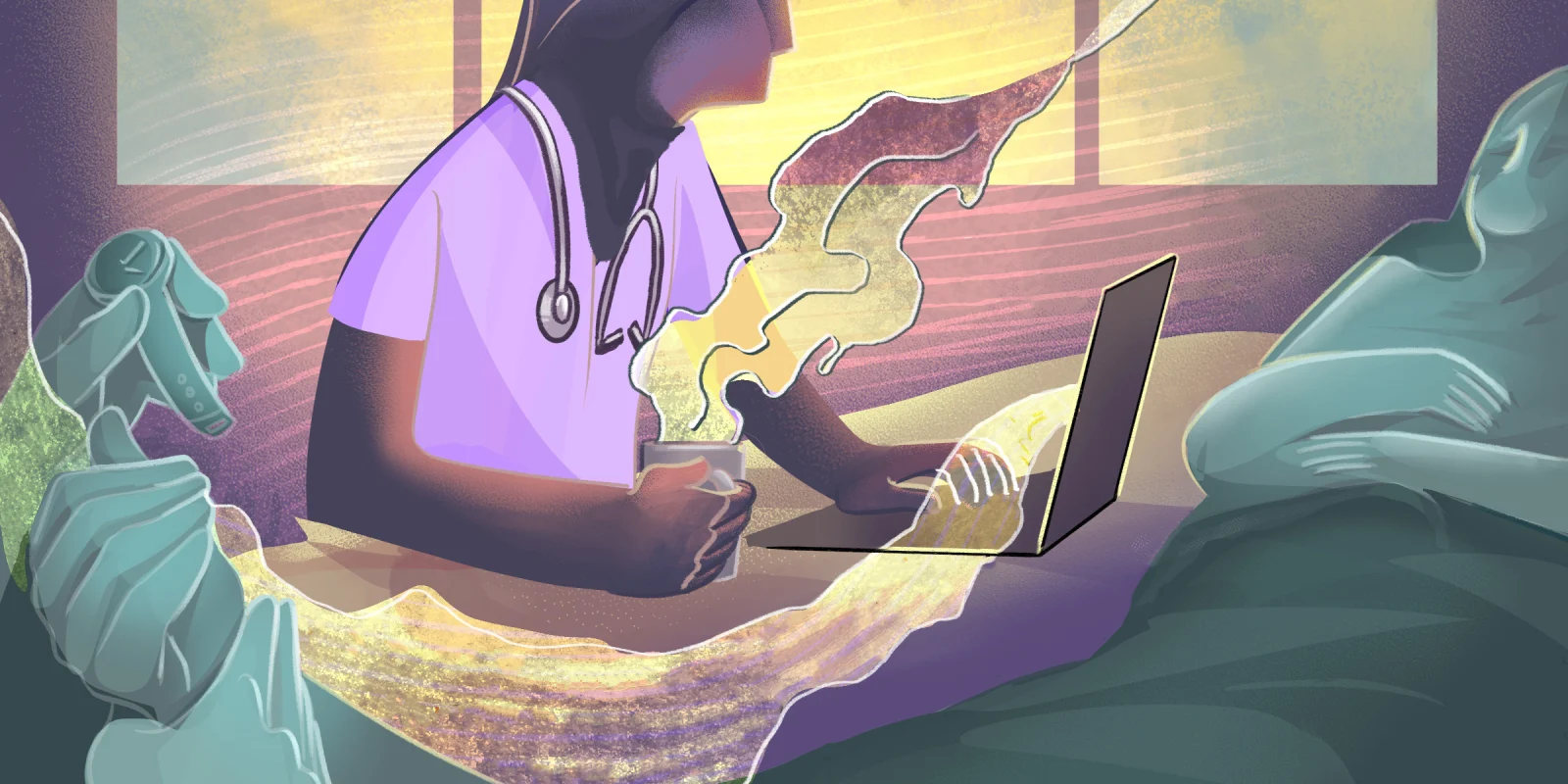I looked down at the buzzing team pager, “Trauma Arrest: GSW.”
It was my first clinical rotation as a medical student. One month of surgery deep, my hands went from clumsy to steady and practiced as I tied the surgical knots that the residents taught me. Now on my trauma surgery rotation, I was slightly proud that I no longer cringed at the smell of a Bovie as it cauterized human flesh, and that my residents gave me more autonomy in the OR. At the start of our clinical years, I anticipated seeing death manifest itself, but I wasn’t sure in what way or when.
Then I met Sam.
Our trauma resuscitation area was a U-shaped wing, with multiple bays separated by squeaky floors cleaned frequently due to the regular influx of people coming in for falls, lacerations, altered mental status, or MVAs. Two minutes after our team pager buzzed, a gurney rolled in from outside.
Initially, I couldn’t see him. A man hovered over the upper half of his body doing chest compressions, while others pushed the gurney quickly toward the waiting crowd of trauma surgeons, ER docs, and nurses. Sam came into view, a lanky young man wearing a blood-stained T-shirt with Batman winking on the front. I was suddenly nudged forward by one of my residents to stand behind the man doing compressions and prepare to take over for him.
My first thought: Why in the world would someone ask a medical student just a month out of from her pre-clinical years to do chest compressions on someone whose life was hanging by a thread? It wasn’t because I had the biceps or deltoids, I’ll tell you that much. “It will be good for you to practice. He’ll most likely die on us anyway,” my fellow told me as I moved closer toward the gurney.
The floor was littered with wrappers, gauze, and clothes as a blur of people inserted lines. Trauma shears cut off Batman’s cape, and the bottom half of Sam’s shirt was thrown unceremoniously to the side while he still wore the tattered remains of the top.
When it was my turn, I put my quivering hands on Sam’s chest to start compressions. Sam’s chest heaved under the motion of my hands, his eyes briefly fluttered before the monitors he was hooked to showed his heart rate drop to zero. How many doses of epi he had already received, I cannot recall now. But with a sudden finality I didn’t immediately register, the flurry of activity that previously surrounded me froze. Sam was pronounced dead.
A passerby had discovered Sam outside in a pool of his own blood just three blocks away from the very room he would be rushed into, only to be pronounced dead five minutes later. No one knew what exactly happened that led to Sam being shot innumerable times, or how he hung on for the moments he did before dying.
A few people lingered to prepare Sam’s body for his family to see him. There was the methodical collecting of personal belongings strewn on the floor, the removal of EKG leads to silence the musical hum of asystole. Ceremoniously, almost robotically, the floor was swept and mopped. I heard some voices nearby directing others: “Make sure there’s a matching bullet for every hole. The police will want to know how many there are.” Another standing next to them snickered in response, “I don’t know why they brought him here, he would never have made it.” Another, wrinkling their nose while taking off Sam’s shoes said with revulsion, “Look at his feet. Disgusting – you’d think people would shower every once in a while.”
I was shocked at the seeming lack of compassion in their voices, and thought it poor taste that anyone could think to say those words to themselves, let alone aloud. I wondered to myself what Sam would have thought of those words if a part of his conscious still lingered to hear them. Whether it was a loved one or not, my prior encounters with death were surrounded by an aura of solemn respect, even peace. Right then, it felt as if their words tainted the very air, causing a sickening feeling in my gut. I pushed the feeling down and told myself I would continue to work now, process later. I was not able to reflect much more that night, but I have learned a few lessons for myself since.
The words we use in medicine matter. A slip of the tongue in your sign-out after a grueling call or a casual keystroke in a patient’s chart can forever cause biases to follow them. We’ve all heard the labels – the drug abuser, the difficult patient or parent, the non-compliant asthmatic, the patients that “misbehave” or try to “die on you.” It became my one word of advice to the medical students I work with now as a resident: No matter the circumstance, be intentional with what you say and write about patients, just as you are intentional with the treatment you give them. Words have the power to cause worry and concern. They can reassure and comfort, or pass judgment and criticism. They can instill hope as easily as they can snatch it away.
Now as a pediatrician-in-training, I still think of Sam whenever a patient I have taken care of dies, or when I am talking to a family about my worries for their child’s health. I think of what Sam might have wanted to hear that night had he lived, think of the words I might have said to the onlookers that night with the perspective I have now. I think of what we might owe each other beyond the physician- or nurse-patient relationship, but just between fellow humans. Just as much as we respect our patients when they are living among us, we should continue to treat them with dignity when they are not. If not for the sake of the oaths we took in medical or nursing school, then for the sake of treating others with the humanity we hope to also receive in our direst moments of need.
Dr. Zahur Fatima Sallman is a resident physician in Pediatrics at Children’s Hospital of Michigan. She is a graduate of the University of Maryland School of Medicine. She loves acrylic painting, pizza making with her husband, and considers herself an amateur carpenter. Dr. Sallman is a 2022–2023 Doximity Op-Med Fellow.
All names and identifying information have been modified to protect patient privacy.
Illustration by April Brust







